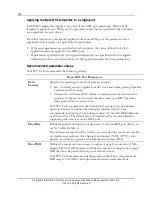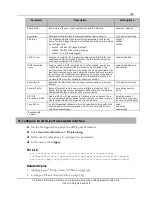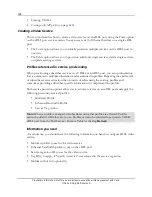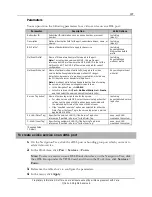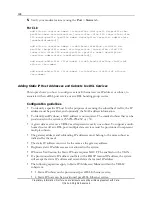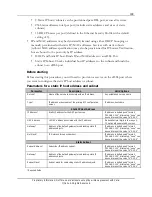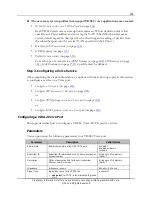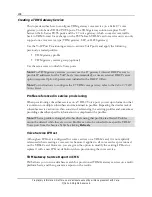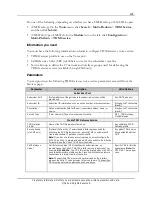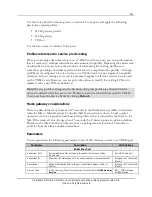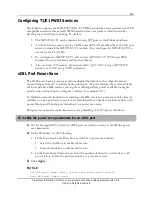
205
Proprietary Information: Not for use or disclosure except by written agreement with Calix.
© Calix. All Rights Reserved.
Creating a SIP Service
This topic describes how to configure SIP voice service on a VDSL2 card Voice (POTS)
port. Each VDSL2 card can only support one voice service type, either SIP, TDM gateway,
or H.248 gateway.
Use the Voice Port Provisioning screen to activate Voice ports and apply the following
previously-created profiles:
SIP gateway profile
Dial plan profile
IP Host
Use the same screen to disable Voice ports.
Profiles referenced in service provisioning
When provisioning subscriber services on a VDSL2 card Voice port, you set up information
that is common to multiple subscribers and maintained in profiles. Repeating the similar task
of subscriber service activation then consists of referencing the existing profiles and
sometimes providing subscriber-specific information to complement the profiles. Although
an IP Host is configured for voice services on a VDSL2 card, it is not required to explicitly
reference it when creating a SIP service because it applies to all voice services provisioned on
the VDSL2 card. However, you are given the option to modify the existing IP Host or
replace it with a new IP Host definition.
Note:
When a profile is changed, all subscribers using that profile are affected. Profiles
cannot be deleted while they are in use. Profiles can also be reloaded for a specific VDSL2
Voice port from the Service Table by clicking
Refresh
.
Information you need
You must have the following information on hand to configure SIP voice service:
SIP server and call feature information with which to populate a SIP configuration file
(Optional) IP addresses for SIP lines (only if using a static IP addressing scheme)
SIP profile to use on the voice (POTS) port
VoIP telephone number
IP address of your VoIP provider’s SIP server
(For SIP VoIP mode only) The IP address or domain name of the SIP server or
outbound proxy SIP server.


